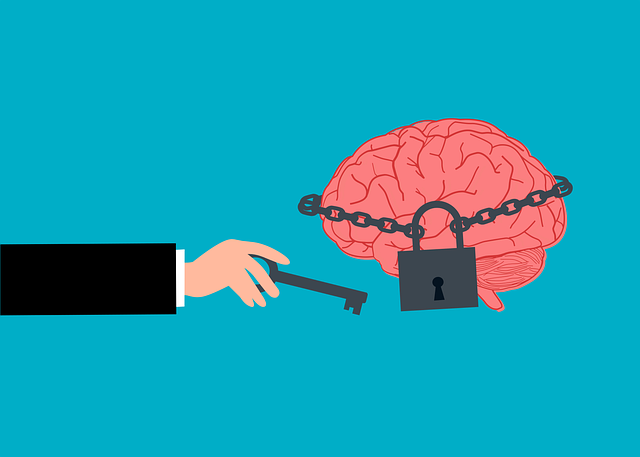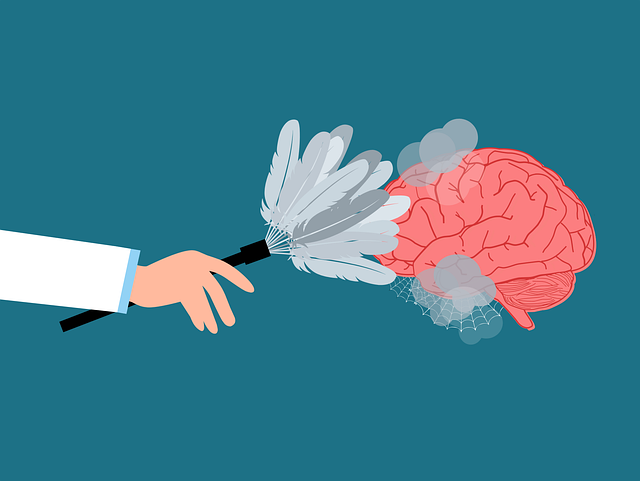Burnout among healthcare providers treating children with depression is a growing concern driven by high-stress environments and demanding roles. Early indicators include irritability, fatigue, reduced motivation, and decreased job satisfaction. Effective interventions involve stress management techniques like mindfulness practices, trauma support services, and fostering a supportive work environment through open communication, collaboration, and work-life balance policies. Evidence-based practices such as cognitive-behavioral therapy (CBT) and specialized therapy for depression mitigate burnout risk. Encouraging self-care, including therapy for both children and adults, along with Mental Wellness Coaching Programs and Social Skills Training, is vital for provider longevity and improved patient care outcomes.
Healthcare provider burnout is a growing concern, impacting both practice quality and patient outcomes. This article explores evidence-based strategies to prevent burnout among healthcare professionals. We delve into recognizing early signs and symptoms of burnout, creating supportive work environments, implementing stress management interventions, and encouraging self-care practices. By adopting these approaches, healthcare providers can enhance well-being, mitigate risks, and ensure longevity in their field, even when confronting challenges like therapy for children with depression.
- Recognizing Burnout in Healthcare Providers: Early Signs and Symptoms
- Creating a Supportive Work Environment: Strategies for Prevention
- Evidence-Based Interventions for Stress Management and Well-being
- Encouraging Self-Care Practices: Prioritizing Mental Health for Longevity in the Field
Recognizing Burnout in Healthcare Providers: Early Signs and Symptoms

Burnout among healthcare providers is a growing concern, often stemming from prolonged exposure to high-stress environments and demanding patient care roles. Recognizing burnout early is vital for effective intervention. Healthcare professionals may exhibit subtle changes in behavior or mood that can signal distress. Common signs include increased irritability, fatigue, reduced motivation, and decreased satisfaction with work. Some healthcare providers may also experience emotional detachment from patients or colleagues, leading to a sense of apathy or cynicism. These early indicators should not be overlooked, as they can escalate into more severe issues if left unaddressed.
In the context of therapy for children with depression, stress management plays a crucial role in preventing and mitigating burnout. Emotional well-being promotion techniques, such as mindfulness practices, can help healthcare providers maintain resilience and reduce stress levels. Additionally, trauma support services are essential, particularly when professionals work with patients who have experienced complex traumas, as these services can provide the necessary tools to manage emotional challenges effectively.
Creating a Supportive Work Environment: Strategies for Prevention

A supportive work environment plays a pivotal role in preventing healthcare provider burnout. Organizations should prioritize creating spaces that foster open communication and collaboration among staff. Regular team-building activities, transparent leadership, and clear job expectations can significantly boost morale and reduce stress levels. Additionally, implementing policies that promote work-life balance, such as flexible schedules and limited on-call hours, is essential for maintaining a healthy work environment.
Incorporating mental health support into the fabric of this environment is crucial. Stress Management Workshops and Mindfulness Meditation sessions can provide healthcare providers with practical tools to cope with workplace pressures. Mental Illness Stigma Reduction Efforts should also be initiated to create a culture of understanding and empathy, ensuring that professionals feel comfortable seeking help without fear of judgment. These proactive measures can contribute to a more positive and sustainable work atmosphere, ultimately preventing burnout among healthcare providers.
Evidence-Based Interventions for Stress Management and Well-being

Evidence-based interventions play a pivotal role in healthcare provider burnout prevention strategies. One such intervention is cognitive-behavioral therapy (CBT), proven effective for managing stress and improving mental well-being. CBT helps healthcare professionals identify and change negative thought patterns, thereby reducing anxiety and depression symptoms associated with high-stress work environments. This approach fosters self-esteem improvement by teaching practical coping mechanisms that enhance resilience to stress.
Additionally, integrating trauma support services has emerged as a powerful strategy in burnout prevention. Many healthcare providers, especially those working with children, frequently encounter individuals experiencing trauma. Evidence suggests that providing specialized therapy for children with depression and other mental health challenges can significantly mitigate the risk of burnout. By incorporating these evidence-based practices, healthcare organizations can create supportive environments that not only reduce staff stress but also enhance patient care outcomes.
Encouraging Self-Care Practices: Prioritizing Mental Health for Longevity in the Field

In the fast-paced and emotionally demanding field of healthcare, burnout prevention strategies are vital to ensure longevity and well-being for providers. Encouraging self-care practices is a cornerstone in mitigating burnout. Healthcare professionals often face high stress levels, which can lead to mental health issues such as depression. Prioritizing mental health through therapy, whether it’s for children or adults, becomes an essential tool in the fight against burnout. By integrating therapy into their routines, providers can develop healthier coping mechanisms and maintain resilience.
Additionally, developing Mental Wellness Coaching Programs and implementing Social Skills Training can foster a supportive environment. These initiatives promote self-awareness, stress management, and effective communication—all of which contribute to better mental wellness. Healthcare organizations should recognize the importance of these strategies, ensuring their providers have access to resources that support both professional and personal growth.
Healthcare provider burnout is a pressing issue, but by recognizing early signs and implementing preventive strategies, we can foster a more supportive work environment. Creating a culture that prioritizes well-being through evidence-based interventions and encouraging self-care practices is essential to combat stress and promote mental health. By adopting these measures, healthcare providers can not only enhance their own longevity in the field but also improve patient care and outcomes, ultimately benefiting the entire healthcare ecosystem.














